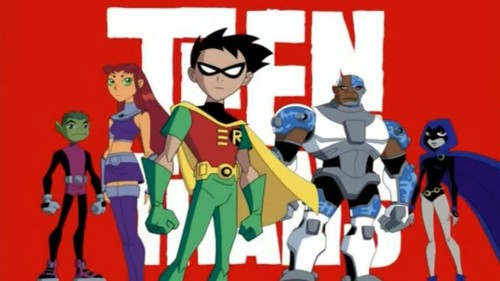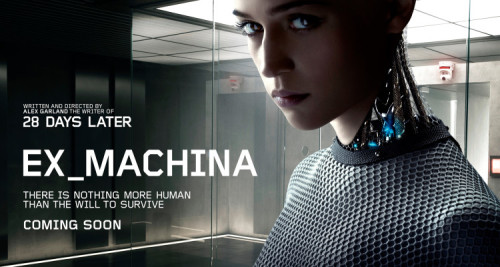Trigger warning for physical abuse and sexual assault.
DC’s comic book superhero team Teen Titans has been adapted and readapted as an animated series in recent years, and has a live action TV pilot in the making. The team gained newfound popularity due to Cartoon Network’s animated series Teen Titans (2003-2007), created by Glen Murakami. The show is rated TV-Y7 (for children aged 7 and up), and contains a lot of silly and, well, cartoonish humor. However, not all of its episodes are comedic, and the show contains a number of adult themes, addressing serious issues both directly and metaphorically. Villains Slade, Brother Blood, and Trigon are patriarchal figures who physically, psychologically, and often (metaphorically) sexually attack, abuse, and assault the Teen Titans, causing them severe and often long-lasting psychological trauma.

The protagonists often internalize this trauma, thereby hurting themselves, and externalize this trauma by lashing out at and causing harm to each other. An example of this is in the episode “Haunted” in which Robin, metaphorically suffering from PTSD and having hallucinations of the villain Slade, yells at his love interest Starfire and hurts her arm. Trauma due to patriarchal figures is also experienced by the villainess Blackfire and anti-heroine Terra, who internalize the abuse, and try to find stability, success, and happiness by taking on patriarchal roles themselves. Blackfire, as queen of a planet and people looked down upon and, as evidenced in “Troq,” called racial slurs by the rest of the galaxy, attempts to force her sister into an arranged marriage for political reasons in “Betrothed.” When Starfire refuses to go along with the marriage, Blackfire physically attacks her. Starfire, and other female characters, realistically face abuse and oppression from male characters, whether strangers, enemies, friends, family, or love interests, as well as abuse and oppression from fellow female characters. It is then no wonder that this abuse is often internalized, such as when Starfire needlessly apologizes to Robin at the end of the first season for having “doubted” him.
Robin, Cyborg, and Beast Boy struggle to define their own masculinity after experiencing patriarchal abuse for themselves, but particularly upon witnessing patriarchal abuse of their female teammates. This is especially true of Robin and Beast Boy after recognizing their own abusive behavior toward Starfire and Raven, respectively, and apologizing for it. As Robin is the team’s leader and is arguably the main character, his character arc is one of the most developed, and much of the show’s commentary on patriarchy is done through Robin’s storylines, which most often put him in opposition to Slade, especially in the first season.
Before Slade, Brother Blood, and Trigon, another patriarchal figure affected the five Teen Titans, due to having trained their leader. Batman is often alluded to in the story, though never mentioned by name. Robin, who is White, male, and able-bodied, has privilege over the other superheroes in the show due to Batman having taken him under his (bat)wing. Though Robin would still have been talented without Batman’s help, Batman provided him with a level of intense training and real world experience in crime fighting that his other teammates lack. This extra training and experience made Robin the most qualified of the team to be its leader, and he becomes a patriarch due to the privilege afforded him by a patriarch.

Robin struggles with this patriarchal identity, and as the team becomes more experienced and Robin learns to deal with his control issues, the team becomes more of an ensemble with less of a hierarchy. This change in Robin’s leadership role and his relationship to the rest of the team is particularly examined in the episode “The Quest,” in which Robin feels confident enough in the team’s abilities to leave them for a time while he goes on a personal mission. While he is gone, all four remaining team members dress up in Robin’s extra uniforms and act out their envy of Robin’s “cool” position as their leader, taking turns on his motorcycle and referring to each other as “Robin.” When Robin returns and catches them in the act, they at first fear punishment, but Robin instead sits down and joins them in eating pizza together, which greatly surprises them.
In the first episodes of the series, Robin doesn’t give the team enough leeway or support, sometimes treating them more as tools or his own personal soldiers, as opposed to individual people. The team needs Robin’s leadership, due to his training and experience, as evidenced in “Final Exam,” when the team thinks they have lost him. However, it is Robin’s over-controlling personality and his emotional distance that almost leads members of his team to quit. In order to keep Cyborg, his second-in-command, from leaving the team in “Divide and Conquer,” Robin has to apologize for his actions and relinquish some of his patriarchal (and White supremacist, as Cyborg is Black/Biracial Black and White) control. In the next episode, entitled “Sisters,” Robin has to show respect for Starfire, an orange-skinned immigrant from the planet Tamaran, in order to keep her on the team, connecting with her on an emotional and personal level. Due to these changes in Robin’s leadership style, the team becomes more cohesive and functional in their crime fighting, and more supportive of each other as friends. The show continues to promote integrationist values throughout the rest of its run, sometimes challenging White supremacist capitalist patriarchy, but often supporting heteronormativity.
Later in the first season, particularly in the episodes “Masks,” “Apprentice Part 1,” and “Apprentice Part 2,” it is clear that Robin still struggles with arrogance and a lust for power, control, and independence, often feeling that the team holds him back from reaching his full potential. The villain Slade taps into these desires and weaknesses for his own gain. Slade, an adult man with an army of robots, immense resources, and incredible influence and privilege, tells Robin that he sees his “potential,” and offers Robin the position of his “apprentice,” claiming he will be “like a father” to him. Robin responds that he’s “not interested,” as it would mean betraying his friends and siding with a known villain. However, when Slade threatens to kill Robin’s friends/teammates by putting his destructive “probes inside their bodies,” Robin is forced to accept Slade’s offer.

Many of the scenes between Slade and Robin have a distinctly sexual and predatory vibe, with Robin being metaphorically raped by Slade and then internalizing the trauma due to Slade insisting that Robin “enjoy[s]” the abuse. In battle, Robin lowers his stun gun when Starfire confronts him. This angers Slade, who tortures her and the rest of the team with his “probes inside their bodies” until Robin physically harms her himself. Thus, a patriarchal figure forces a patriarch-in-training to enact violence against a young woman, who is arguably coded as a Woman of Color. Enacting this violence shows Robin’s loyalty to Slade/patriarchy, and Starfire becomes “the ball” in what media critic Anita Sarkeesian has said is “the game of patriarchy.”
In order to defeat Slade, Robin claims he will find a way to “get [the] controller” of the “probes” away from Slade. This shows Robin’s desire to have control and power, as he does not want to destroy the controller, but to own it himself. Much to Robin’s chagrin, Slade notices this, and points out his and Robin’s patriarchal similarities. Robin eventually realizes that the only way to save his teammates from torture and eventual death is to give up the protection, privilege, and power over others that he has under Slade. Robin puts the same torture devices that are inside the rest of the team inside himself, and Slade is forced to stop the torturing of everyone in order to spare Robin, whom he calls “ungrateful.” The Teen Titans then, for the most part, defeat Slade as a team. The episode ends with Robin admitting that he and Slade are “a lot alike,” though, unlike Slade, who is “alone,” Robin is happy and thankful that he has friends. Though this arc reinforces heteronormativity, often through Robin’s budding relationship with Starfire, it also addresses capitalist patriarchy and its view of people as obstacles, tools, and possessions, a subject which the rest of the show’s seasons continue to address.

While Robin, a White male character, was offered a position of power and privilege by Slade, Slade does not show the same respect to other characters, even including his second apprentice, Terra. Terra, who debuts in the second season in the episode aptly titled “Terra,” is a skinny White girl with blonde hair and blue eyes. While Slade referred to Robin by name, he often addresses Terra by her position of “Apprentice,” especially in “Aftershock Part 2.” This shows how Slade ignores her identity and personhood, even though he empathized with Robin’s. The episode also creates an even clearer metaphor for sexual assault than the show did earlier with Robin. When Terra learns that the uniform Slade gave her allows him to control her body with his own body, causing her pain and controlling her movements, she tries to rip it off, and starts to cry when she can’t. When Beast Boy finds her like this, he asks Slade what he did to Terra, and Slade claims that he didn’t do anything to her that she didn’t “want [him] to.” In a particularly disturbing moment, Slade lifts a seemingly unconscious Terra by her breastplate.

Slade only respecting fellow White men is a trait he shares with other villains. In the third season, Cyborg, who is Black/Biracial, is seen as a “machine” and not a “man” by the villain Brother Blood, who is White. In the fourth season, the demon Trigon sees his daughter Raven as a “vessel” and not a human being. In the fifth and final season, the team faces the villain The Brain and his Brotherhood of Evil, who see everyone as tools, or pieces in a game of chess. Robin learns to respect and support his teammates throughout these storylines, and develops an especially close friendship with Raven, who can arguably be interpreted as being coded as a Woman of Color. The series’ strongest metaphor for sexual assault occurs in the fourth season in the episode “Birthmark,” in which Slade, who is revealed to be working for Trigon, rips off Raven’s cloak and much of her clothing. Robin, a fellow survivor of assault from Slade, supports Raven, and keeps the rest of the team from asking her invasive questions.
This storyline breaks down many barriers in media. Two fellow survivors of rape and assault support each other. A male rape survivor is shown and not shamed. A close platonic friendship between a young man and woman is also incredibly rare. A White young man is also being respectful of a (coded) Woman of Color, supporting her on her own terms, allowing her agency in what she feels she does and does not want to tell him and the rest of the team. Whiteness, maleness, and heteronormativity are still praised and privileged in Teen Titans, but hopefully future media, especially the coming pilot of the live action Teen Titans, continue to address patriarchy and the issues that the animated Teen Titans addressed.






